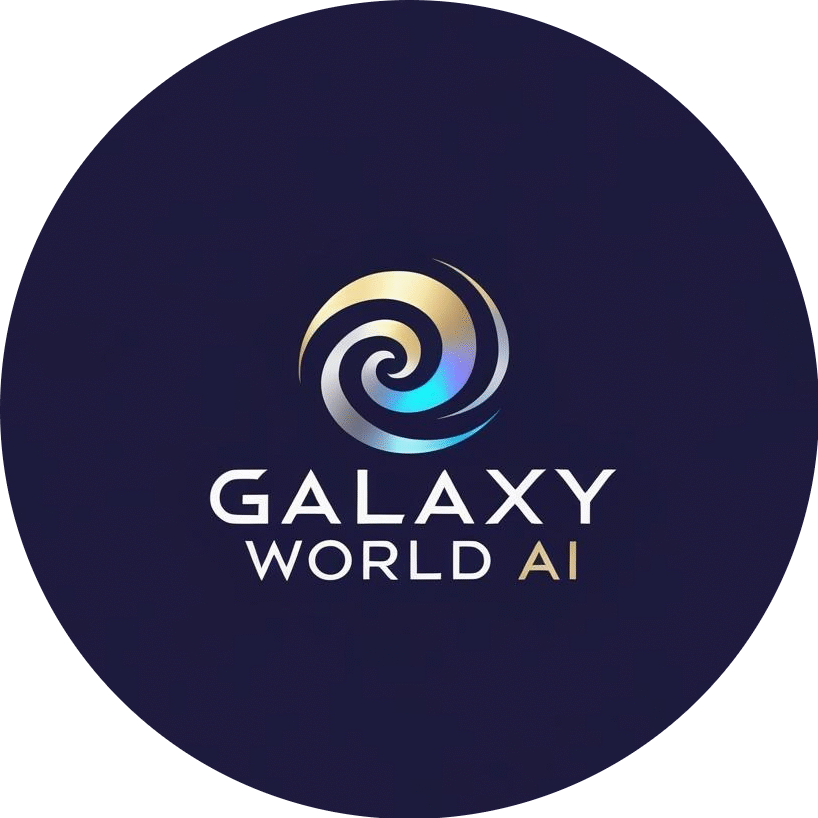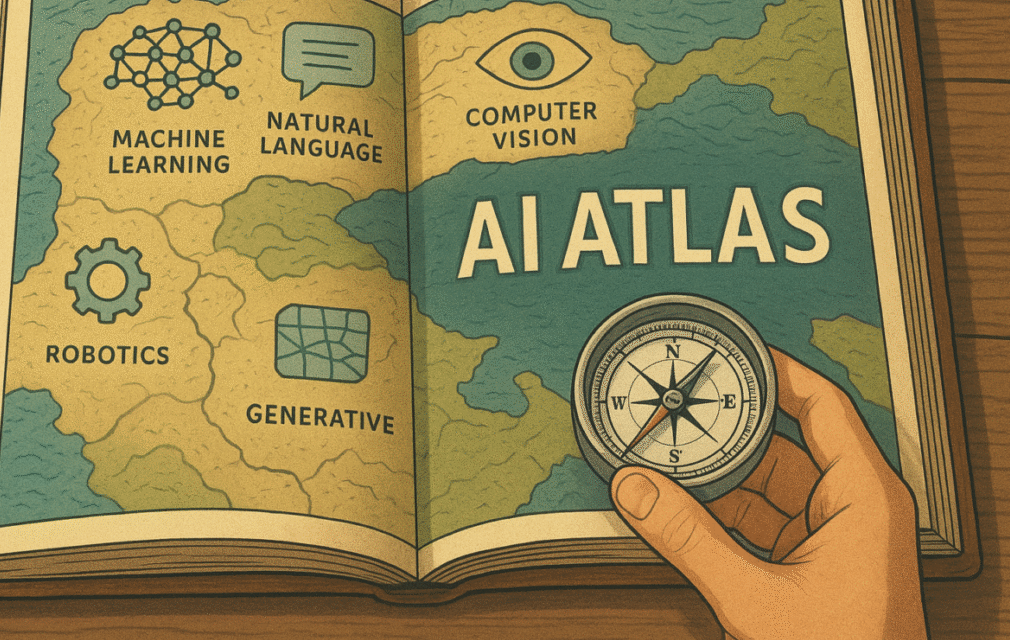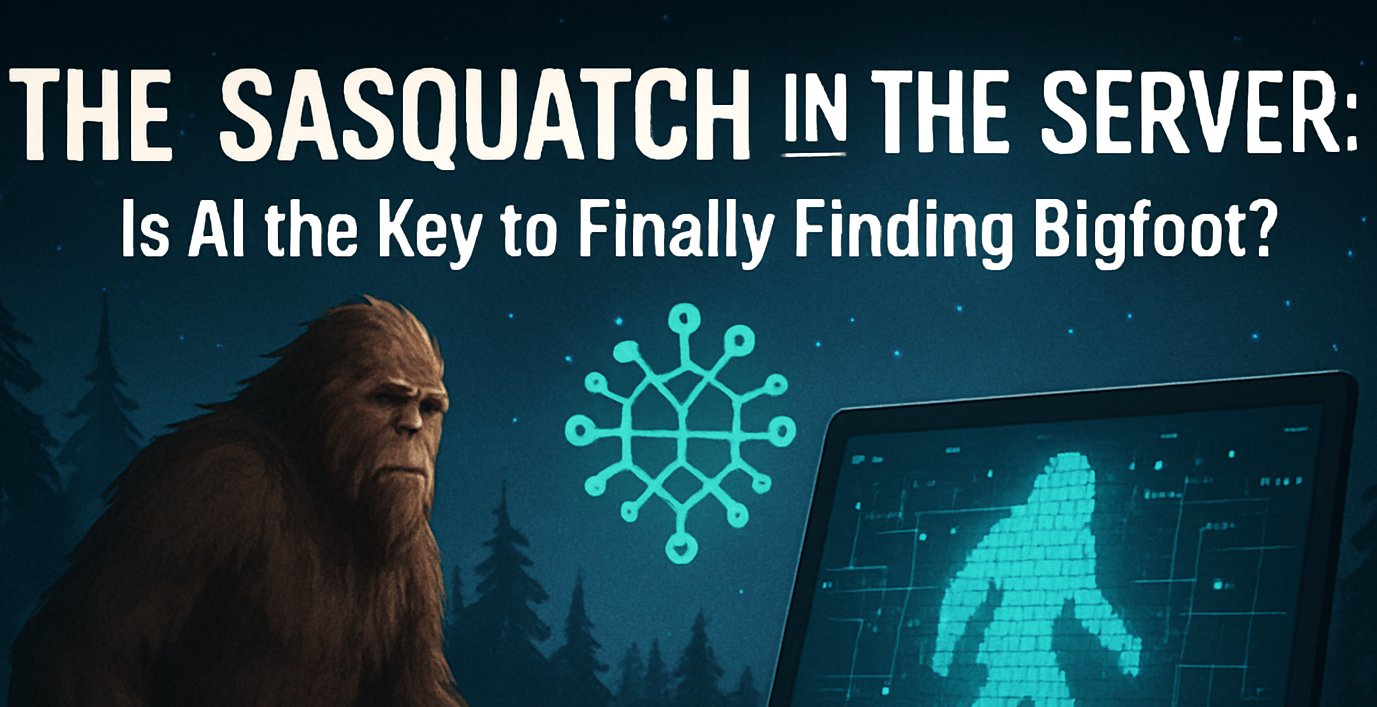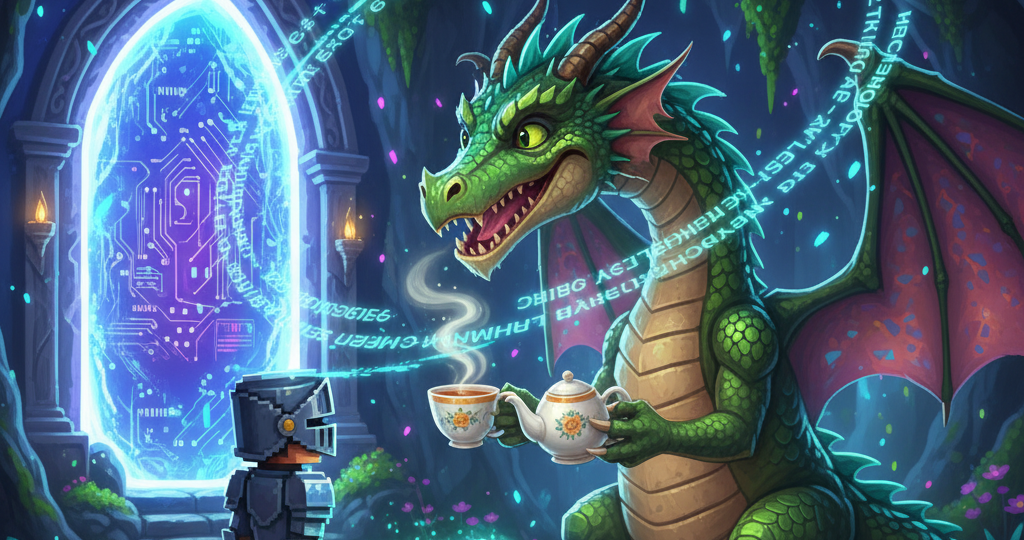If you’ve ever held an old-world atlas in your hands, you’ll know it’s more than a map. It’s a curated view of the world—mountain ridges, ocean depths, winding rivers, and borders drawn by human hands. An atlas is both guide and story. And today, when we talk about artificial intelligence, I believe we need something very much like that: an AI Atlas.
Because AI is not a single “thing.” It’s a sprawling landscape—machine learning algorithms, natural language systems, computer vision, robotics, generative models—all intersecting and evolving at once. Yet most conversations reduce this terrain into either glossy tourist brochures (“AI will change everything overnight”) or apocalyptic warnings (“AI will replace us all”). Neither offers the clarity we need to travel wisely.
The Problem with “The Map”
Right now, the AI discourse feels a bit like being handed a tourist map of an unfamiliar country. Sure, the landmarks are there—ChatGPT, Midjourney, autonomous cars—but the finer details are missing. Where are the blind alleys? The impassable swamps? The small villages of opportunity hidden off the main roads?
In my experience, this is where many leaders stumble. They mistake the marketing map for the actual terrain. They adopt AI systems because a competitor did, or because a vendor promised efficiency, without considering the broader landscape. The result? Expensive detours, frustrated teams, and wasted opportunities.
The Compass, Not Just the Coordinates
Knowing that AI can analyze documents or generate images is just a set of coordinates—it tells you where something is. But what you really need is a compass: the judgment to know when, why, and how to use it.
I once advised a mid-sized retail business that had invested heavily in an AI recommendation engine. The coordinates were right—yes, AI can suggest products. But without the compass of strategy, they deployed it everywhere, pushing irrelevant recommendations that annoyed customers. What they lacked wasn’t the technology; it was the discernment to apply it thoughtfully.
That compass comes from critical thinking, ethical reflection, and a willingness to question not just “Can we?” but “Should we?”
The Human Cartographer
This is the part that often gets lost in the noise. For all its brilliance, AI doesn’t actually decide what matters. It draws the lines, but we are the cartographers. We set the purpose, define the scale, and add the human context that transforms raw data into meaning.
A generative model can draft a thousand product descriptions, but only a human team can decide which reflect the brand’s values. A predictive system can flag risks, but only human leaders weigh those risks against cultural, ethical, or strategic priorities.
Without the human hand, the map is just a jumble of lines. With it, the atlas becomes a guide to real exploration.
A Call for Exploration, Not Just Adoption
That, to me, is the spirit of the AI Atlas. This journey isn’t about rushing to adopt every new tool like tourists chasing souvenirs. It’s about cultivating literacy—learning how to read the terrain, spot misleading shortcuts, and choose routes that serve not just efficiency, but creativity and humanity.
What I’ve observed over the years is that the organizations and individuals who thrive with AI are not the ones who grab the latest shiny model. They’re the ones who approach it with curiosity and intentionality, asking: What story do we want this map to tell?
In the end, we are all cartographers of this emerging landscape. The tools will continue to evolve, but the responsibility to chart a course that is innovative, ethical, and profoundly human—that’s ours alone.




